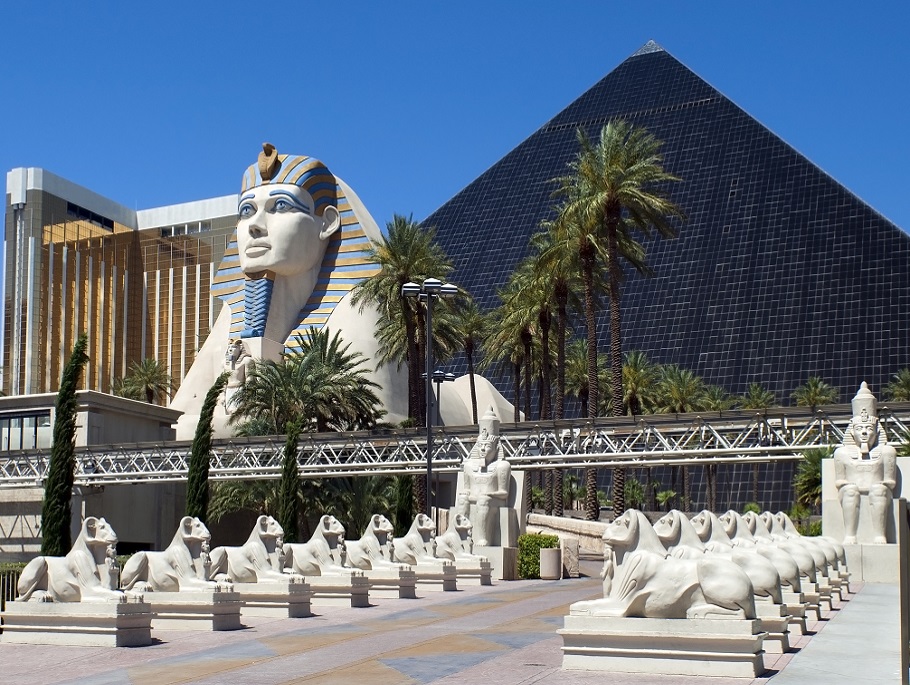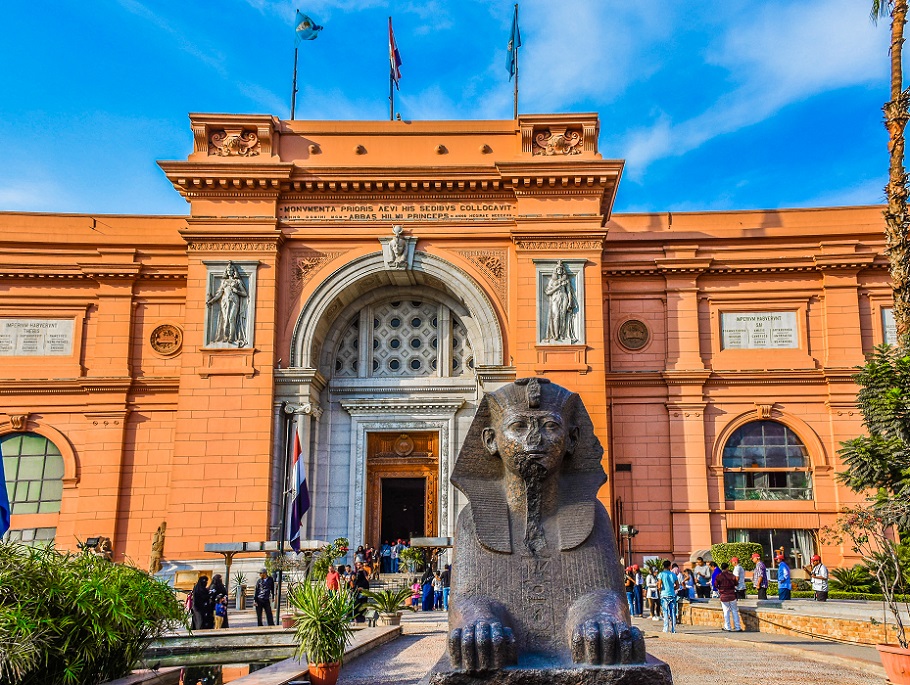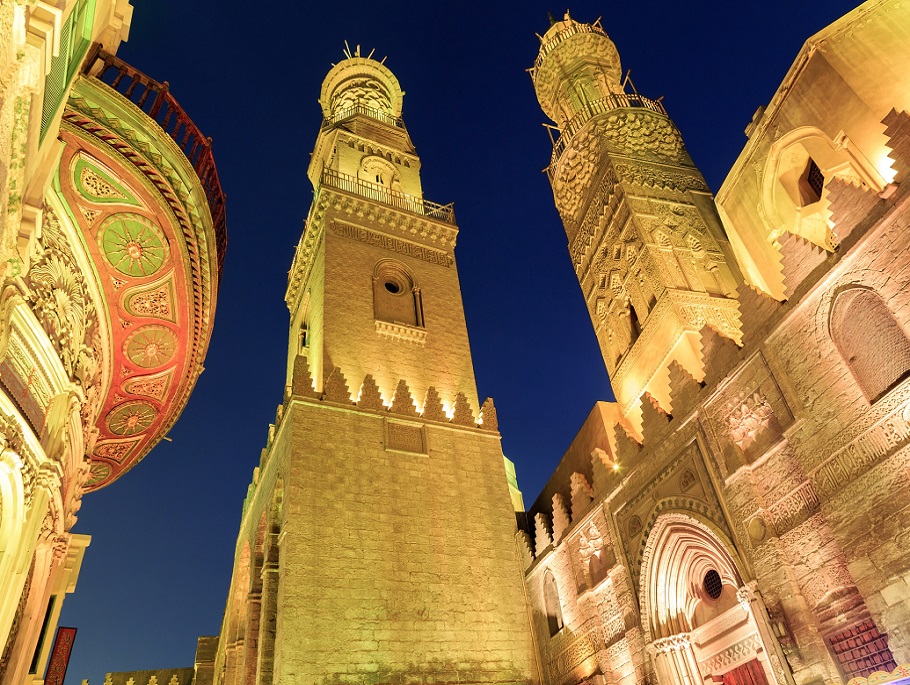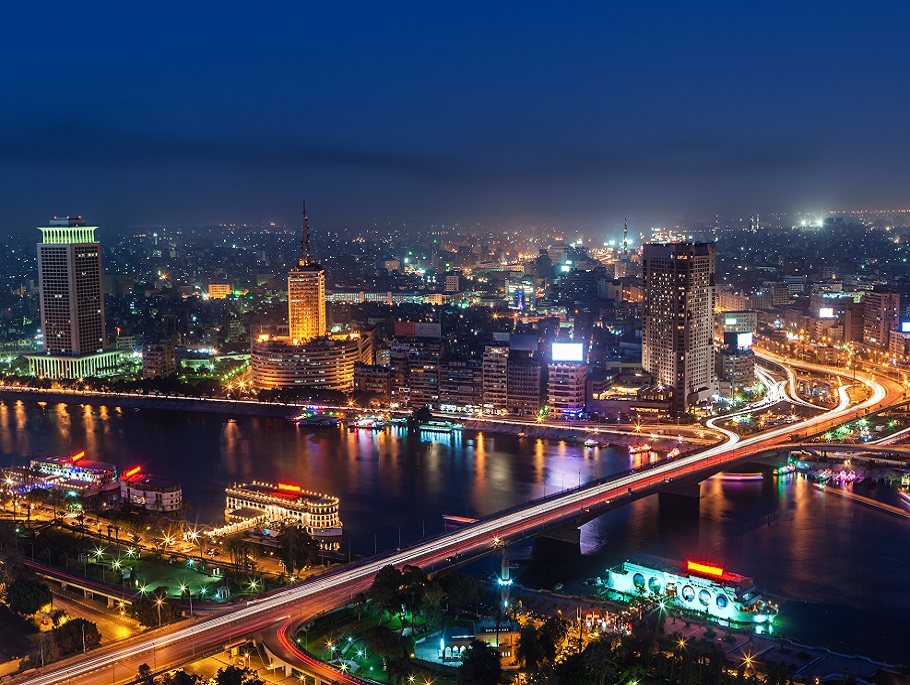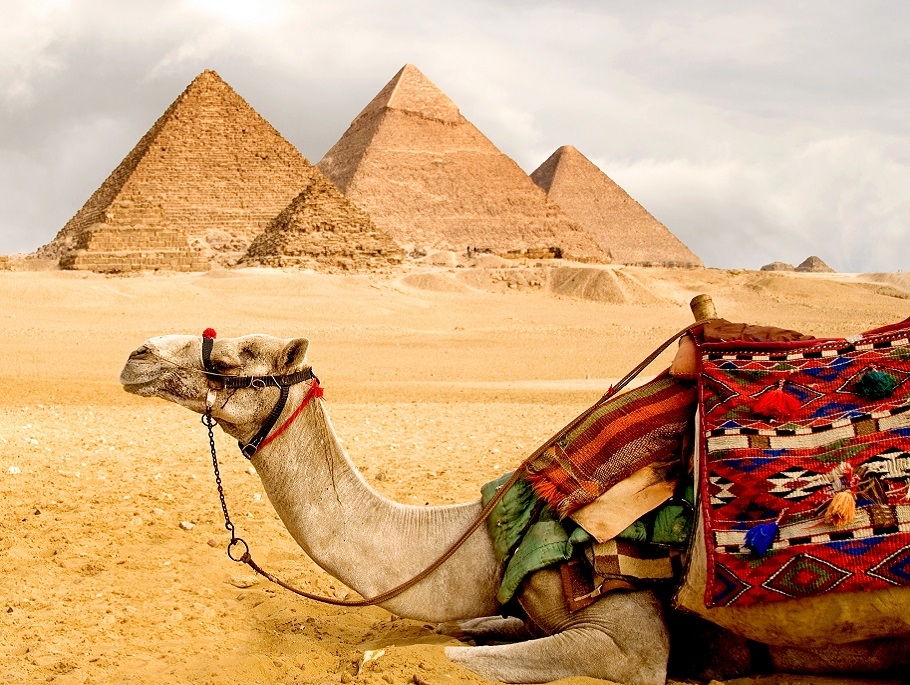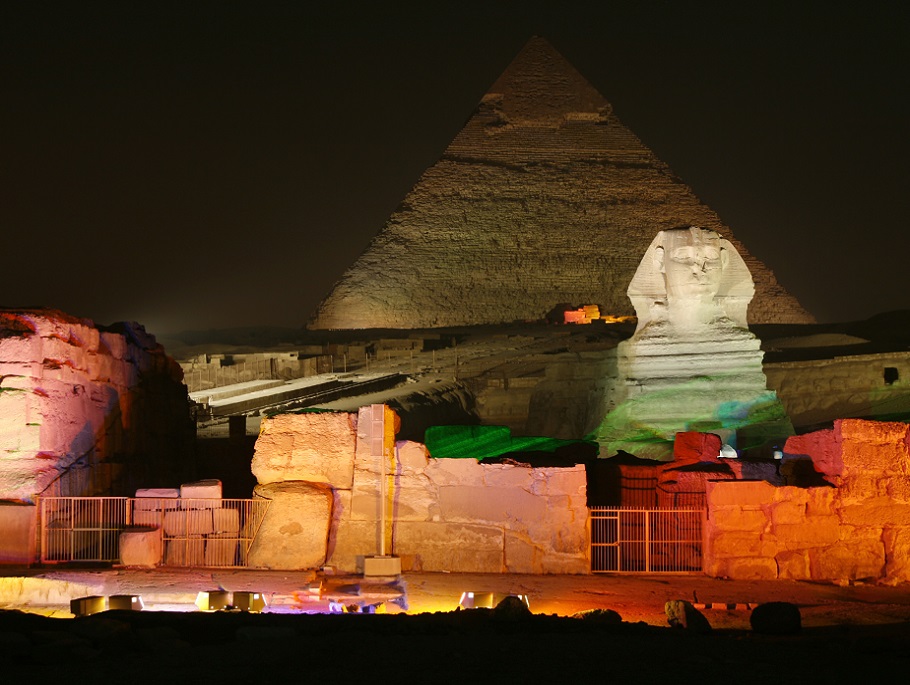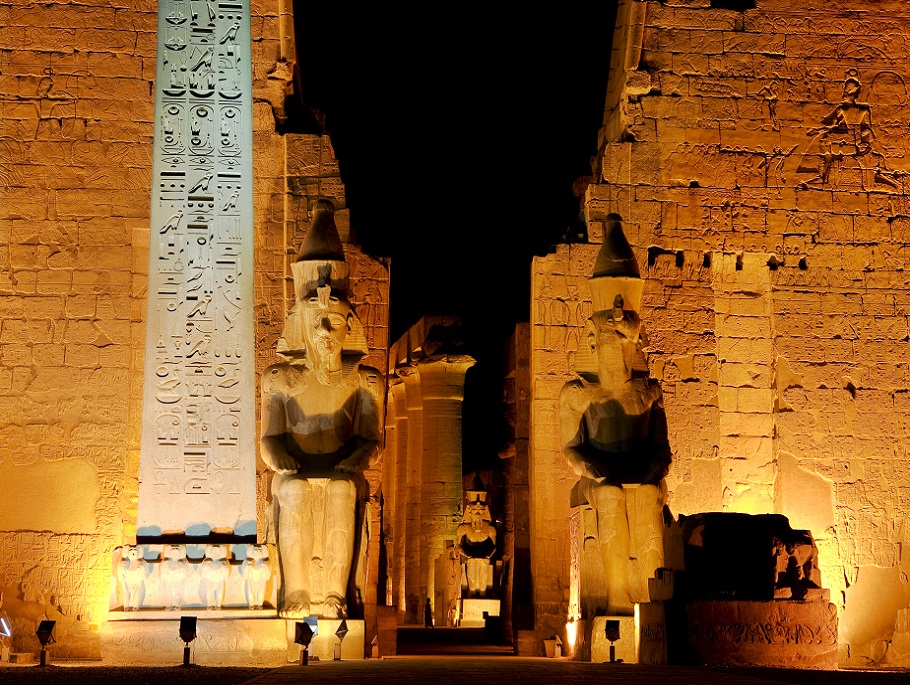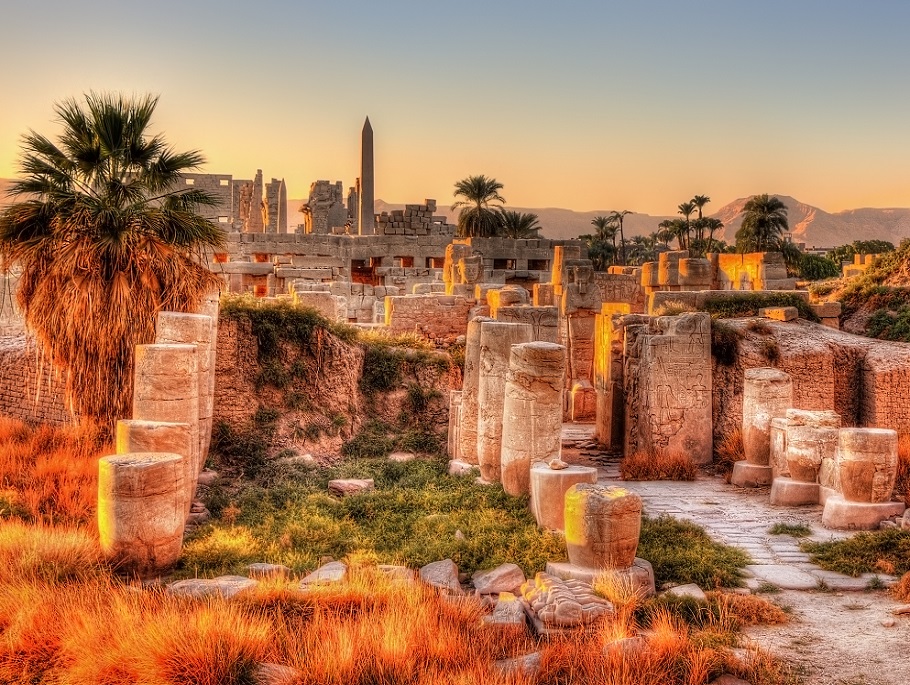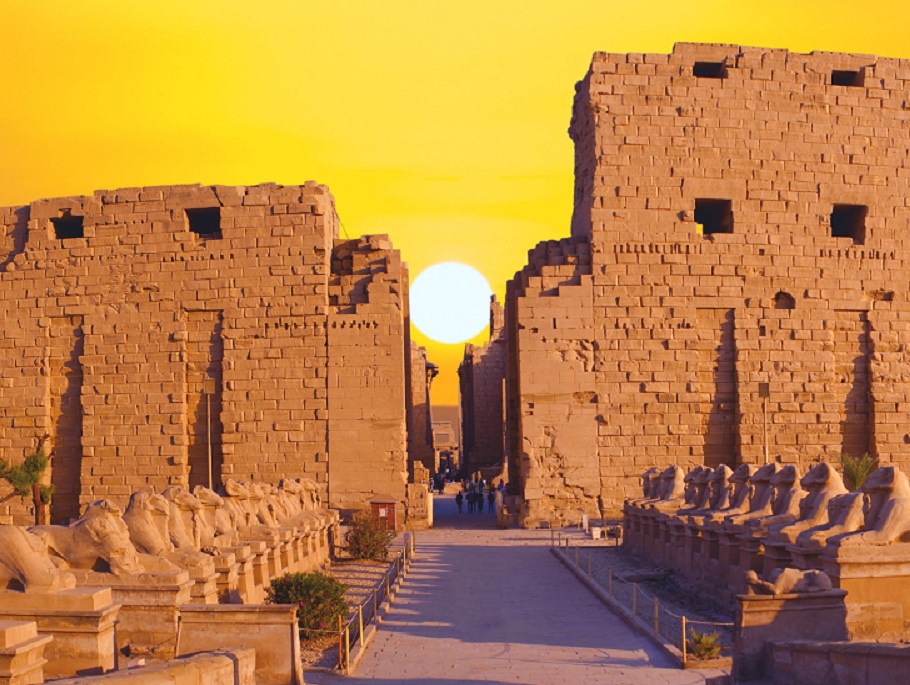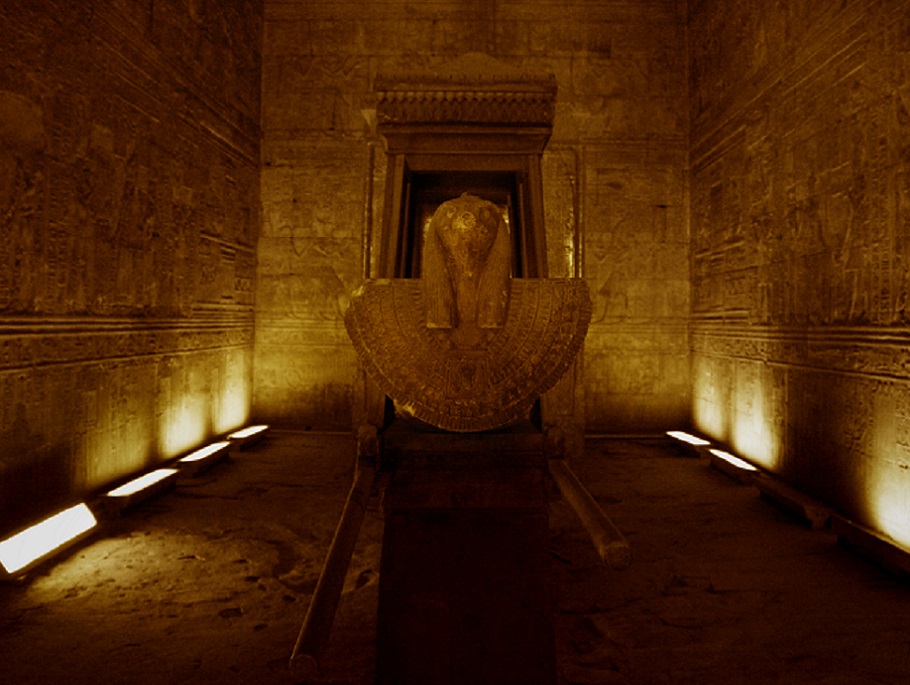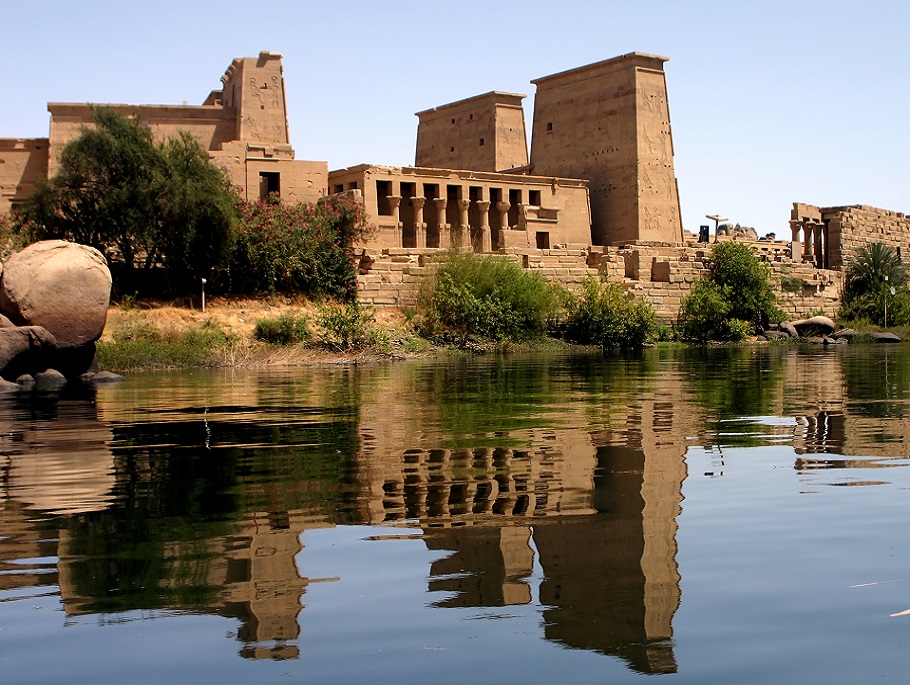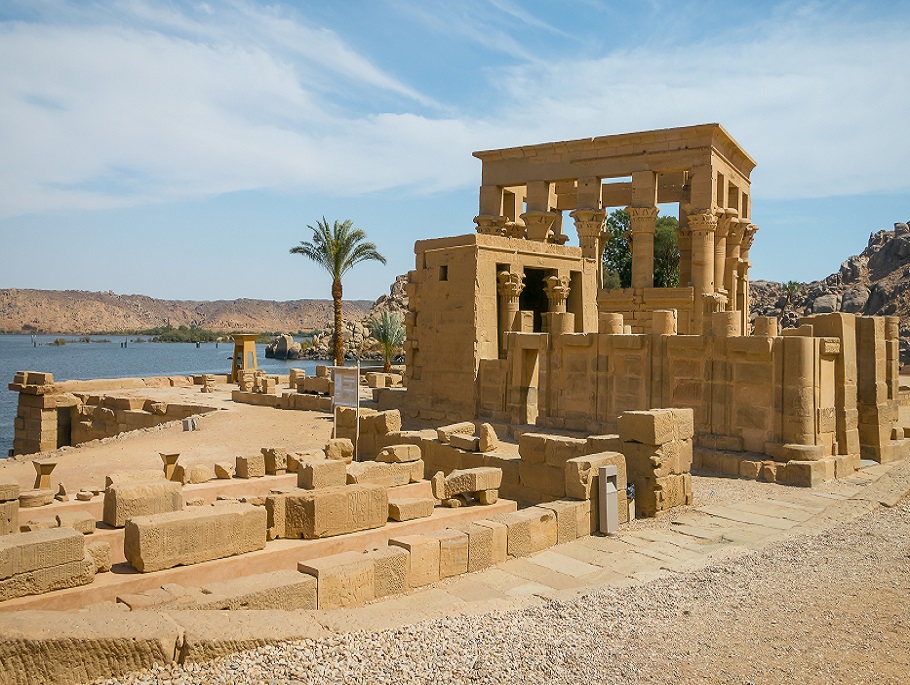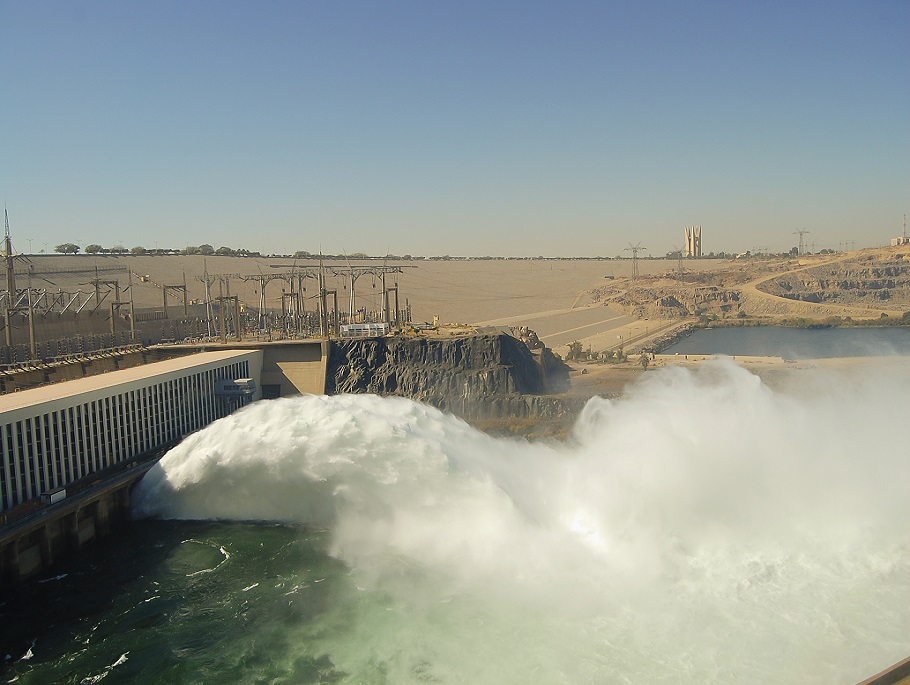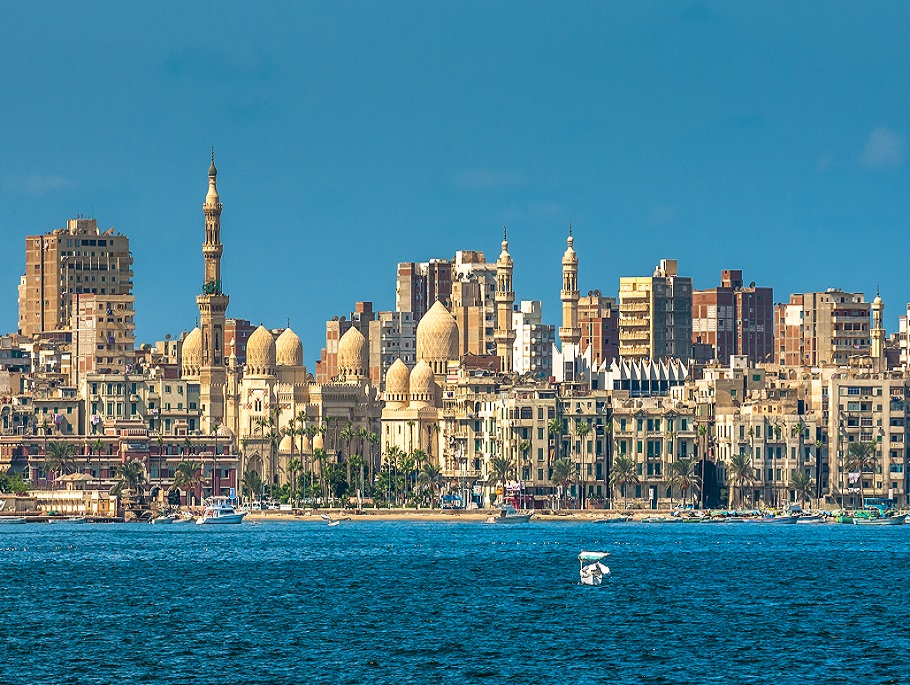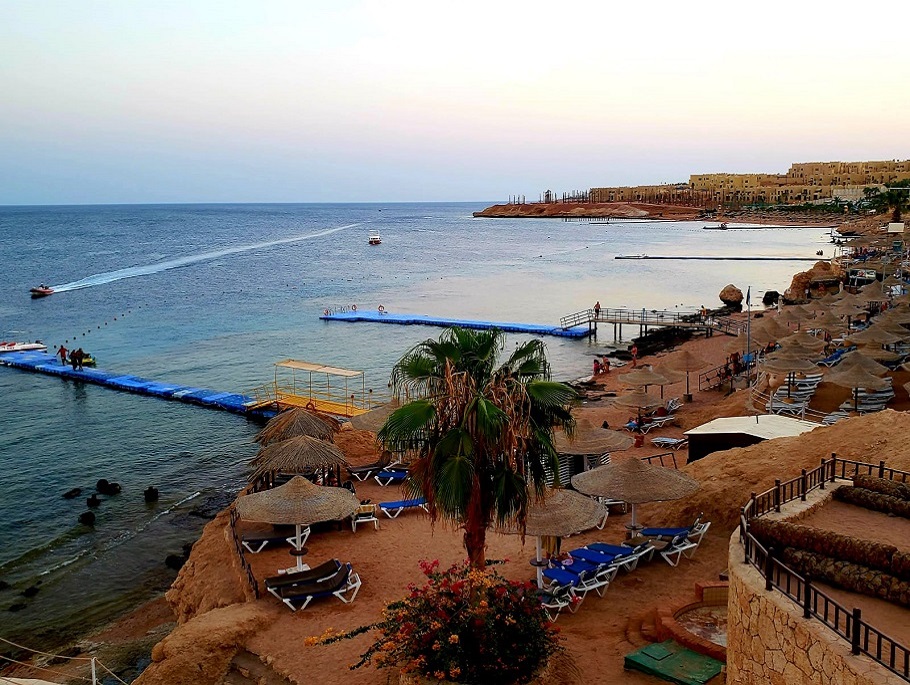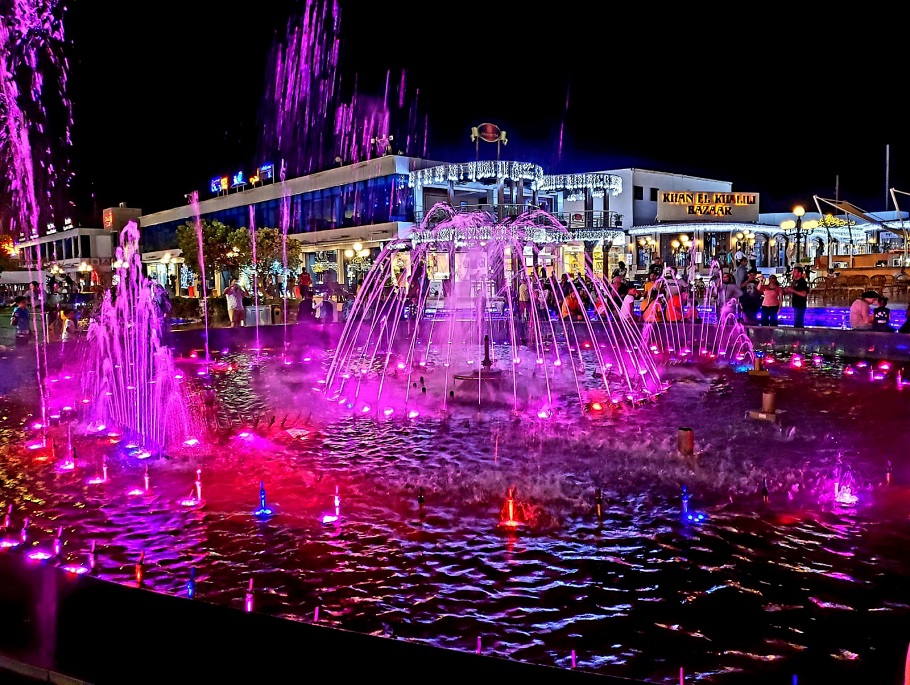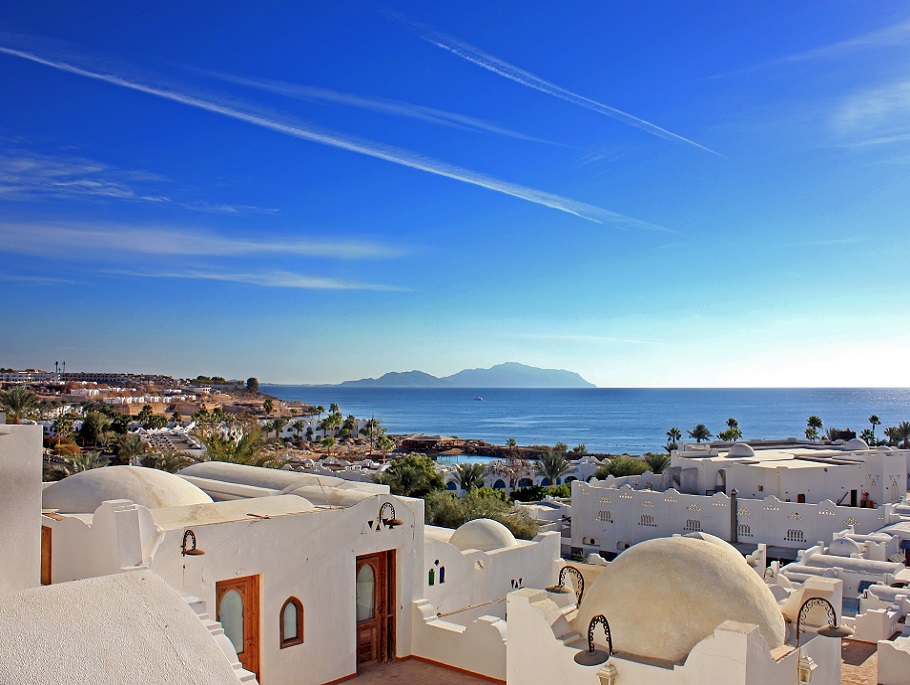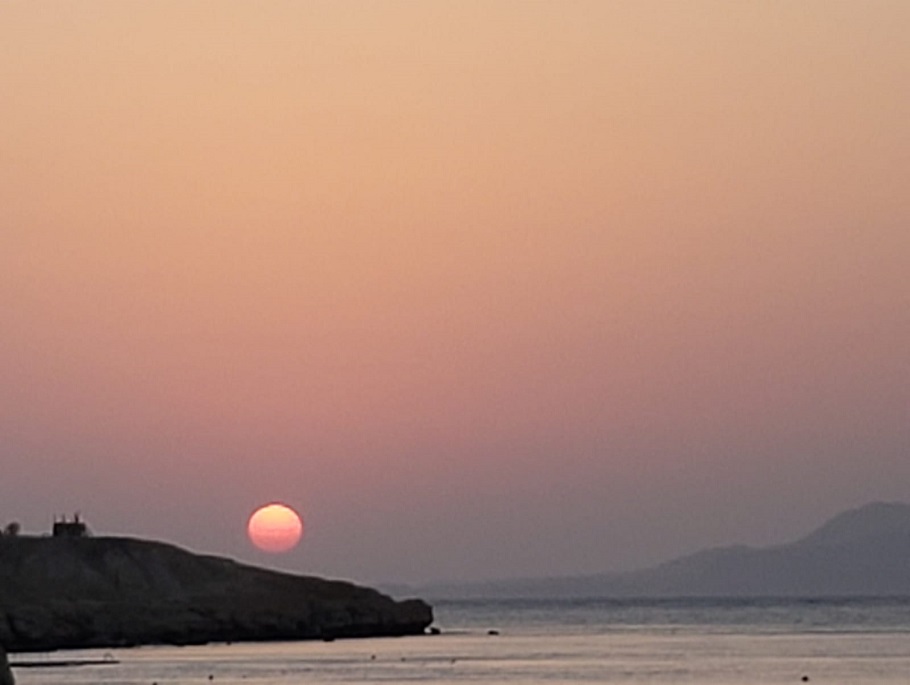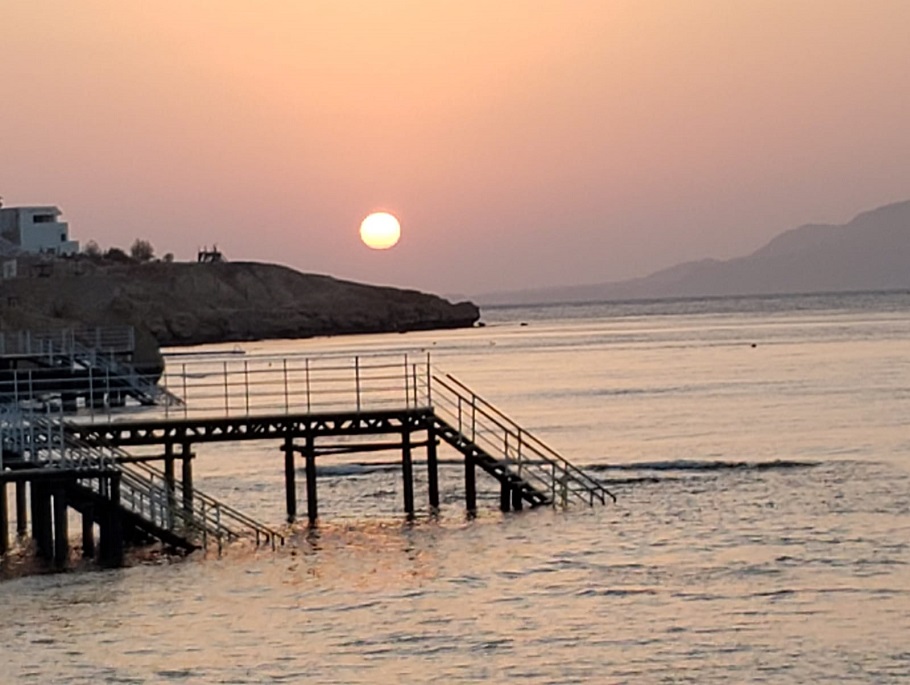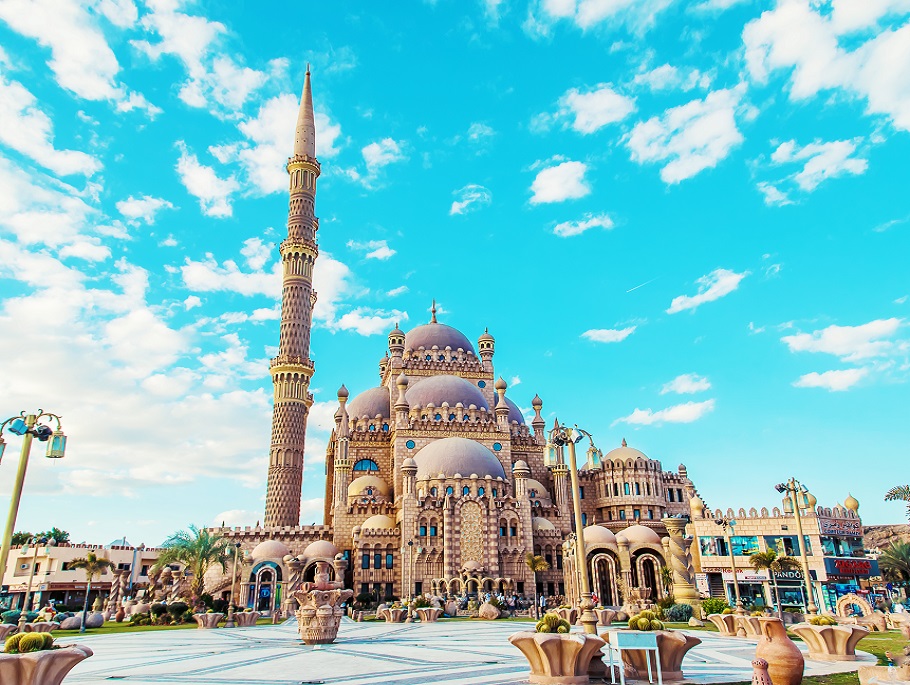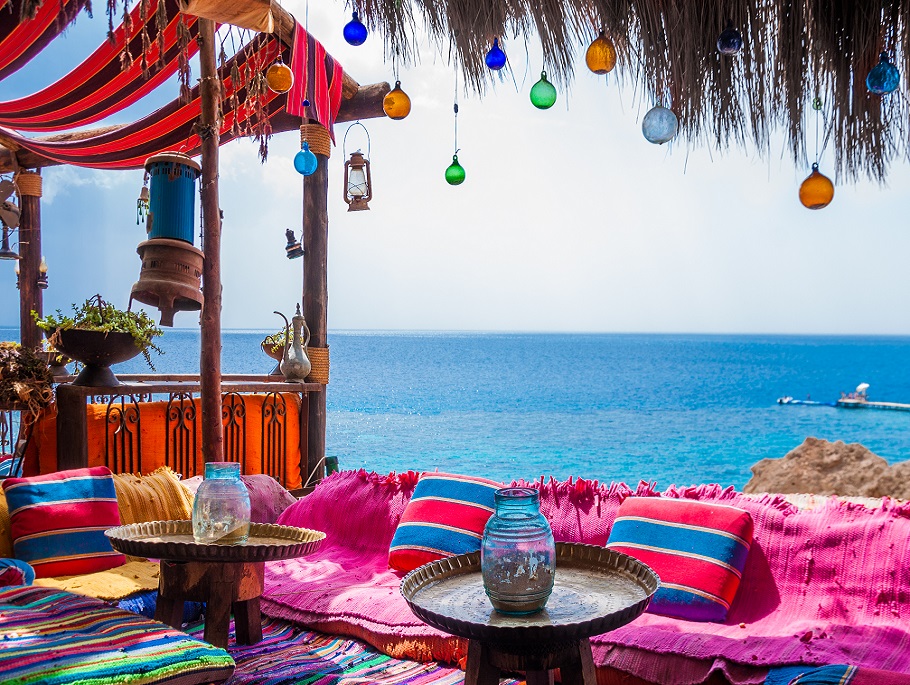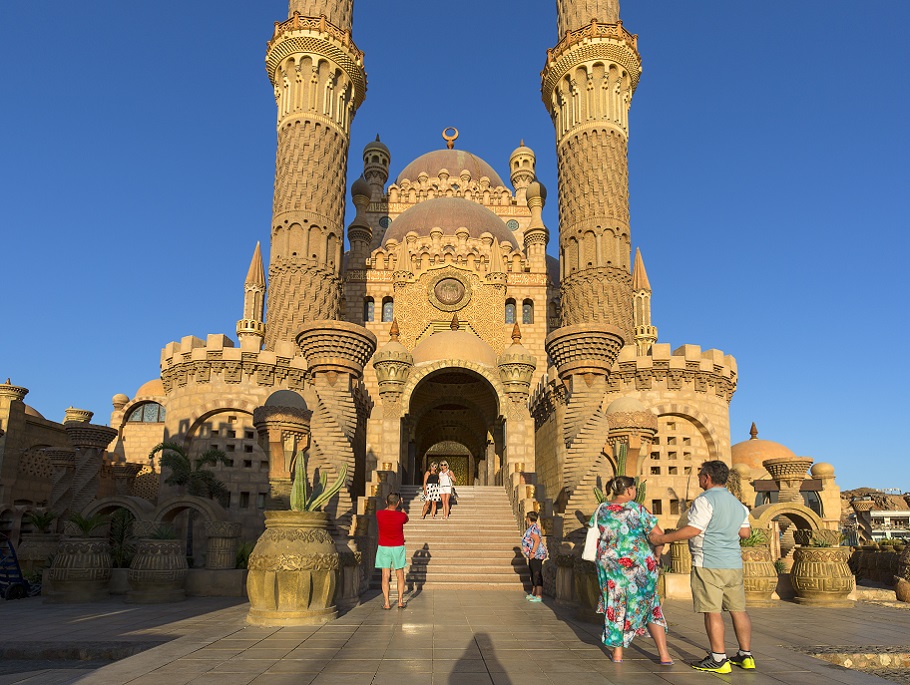Attractions
Looking for the perfect get away of a lifetime? In search of distant lands that steal you away from the hustle of North America? Craving for great hospitality, good food and coastal climates? Make Egypt your destination. Explore an ancient civilization dating back to 3000 B.C, experience the rich culture along with mesmerizing beauty, blue water beaches and more.
Delve into the awe-inspiring Pyramids of Giza, The sphinx, Luxor & Karnak temples, Valley of Kings & Queens, Philae temple, Abu Simbel temple and vast ancient antiquities including a captivating sail on the incredible Nile.
Leave behind the noise and hustle of city life and experience the thrill of desert safari at the distinctive black and white deserts and walk along the crystal blue water sandy beaches - at destination Egypt.

Cairo
Cairo, Egypt’s sprawling capital, is set on the Nile River. At its heart is Tahrir Square and the vast Egyptian Museum, a trove of antiquities including royal mummies and gilded King Tutankhamun artifacts. Nearby, Giza is the site of the iconic pyramids and Great Sphinx, dating to the 26th century BC. In Gezira Island’s leafy Zamalek district, 187m Cairo Tower affords panoramic city views.
The museum houses more than 100,000 Egyptian artifacts, making it the biggest collection in the world. The museum is also famous for its newly refurbished and upgraded Royal Mummies Room, home to several real mummies, some of which are on display.
No trip to Cairo is complete without a visit to the city’s famous Khan El Khalili bazaar located in the Islamic section of Old Cairo. This souk dates back to the 14th century when it was a major trading hub for merchants from all across the Middle East and Europe.
The Citadel of Cairo is also called the Mohamed Ali Citadel or Saladin Citadel. It is today one of the most visited attractions in Cairo, and it’s certainly one attraction you don’t want to miss during your vacation in Egypt.
Ancient Cairo was located adjacent to another city of similar size known as Ayyubid, and both cities were destined to come under threat from the advancing Crusaders. In order to protect the two cities against the Crusaders, the ruler of Ayyubid, Sala-Al-Din (Saladin) declared that he would build a wall around both cities. That wall is today known as Cairo Citadel.
Cairo Tower is a “thrilling” attraction and offers the opportunity to enjoy spectacular views of the city. Interestingly, it has been the tallest free standing tower in Egypt and North Africa for around 50 years. In fact, at 187 meters in height, it was the tallest tower of its kind on the entire African continent prior to 1971, when the Hillbrow Tower in South Africa was constructed.
The Tower is often said to be the city’s second most recognizable landmark after the pyramids, and its convenient location has also helped to put it firmly on the tourist map.
Other Attractions in Cairo:
1. Old Cairo Tours – Churches, Synagogues, And Mosques
2. Djoser’s Step Pyramid
3. Dashur Pyramids
4. Memphis Open-Air Museum
Museum
The Museum of Egyptian Antiquities, known commonly as the Egyptian Museum or Museum of Cairo, in Cairo, Egypt, is home to an extensive collection of ancient Egyptian antiquities. It has 120,000 items, with a representative amount on display and the remainder in storerooms. Built in 1901 by the Italian construction company, Garozzo-Zaffarani, to a design by the French architect Marcel Dourgnon, the edifice is one of the largest museums in the region. As of March 2019, the museum was open to the public. In 2021, the museum is due to be superseded by the new Grand Egyptian Museum at Giza.
The Egyptian Museum of Antiquities contains many important pieces of ancient Egyptian history. It houses the world's largest collection of Pharaonic antiquities. The Egyptian government established the museum built in 1835 near the Ezbekieh Garden and later moved to the Cairo Citadel. In 1855, Archduke Maximilian of Austria was given all of the artifacts by the Egyptian government; these are now in the Kunsthistorisches Museum, Vienna.
A new museum was established at Boulaq in 1858 in a former warehouse, following the foundation of the new Antiquities Department under the direction of Auguste Mariette. The building lay on the bank of the Nile River, and in 1878 it suffered significant damage due to the flooding of the Nile River. In 1891, the collections were moved to a former royal palace, in the Giza district of Cairo. They remained there until 1902 when they were moved, for the last time, to the current museum in Tahrir Square, built by the Italian company of Giuseppe Garozzo and Francesco Zaffrani to a design by the French architect, Marcel Dourgnon.
The Grand Egyptian Museum (GEM), also known as the Giza Museum, is an archaeological museum under construction in Giza, Egypt. When inaugurated, the GEM will be the largest archaeological museum in the world. It will house artifacts of ancient Egypt, including the complete Tutankhamun collection; many pieces will be displayed for the first time. The museum is sited on a plot of land of about 480,000 square metres (5,200,000 sq ft) approximately 2 kilometres (1.2 miles) from the Giza pyramid complex and is part of a new master plan for the Giza Plateau called Giza 2030.
Giza
The Giza Pyramids are listed as one of the 7 Wonders of the Ancient World, and they are visited by millions of tourists each year. They well and truly are the face of Ancient Civilization. The Giza is located at the outskirts of Cairo, and this is where you will find the Great Pyramids of Giza and The Great Sphinx. The three pyramids, for which the site is famous for, are those of Pharaoh Khufu; Pharaoh Kafre and Pharaoh Menkaure, with the pyramid of Khufu being the biggest and oldest. If you intend exploring the interior of Khufu’s pyramid, expect it to be very warm. If you fancy a visit to the Pharaohs burial chamber located at the summit, be prepared for a uphill climb. If you've not visited the Pyramids, you've not been to Egypt.
Attractions at Giza Complex:
1. The Pyramid Of Khufu (Cheops)
2. Pyramid of Khafre (Chephren)
3. Pyramid of Menkaure (Mycerinus)
4. The Great Sphinx
5. The Solar Boat Museum
6. The Pyramids Sound and Light Show
Saqqara
Saqqara or Sakkara is a vast, ancient burial ground in Egypt, serving as the necropolis for the ancient Egyptian capital, Memphis. Saqqara features numerous pyramids, including the world-famous Step pyramid of Djoser, sometimes referred to as the Step Tomb due to its rectangular base, as well as a number of mastaba tombs. Located some 30 km (19 mi) south of modern-day Cairo.
At Saqqara, the oldest complete stone building complex known in history was built, the Pyramid of Djoser, built during the Third Dynasty. Another sixteen Egyptian kings built pyramids at Saqqara, which are now in various states of preservation or dilapidation. High officials added private funeral monuments to this necropolis during the entire Pharaonic period. It remained an important complex for non-royal burials and cult ceremonies for more than 3,000 years, well into Ptolemaic and Roman times.
The earliest burials of nobles can be traced back to the First Dynasty, at the northern side of the Saqqara plateau. During this time, the royal burial ground was at Abydos. The first royal burials at Saqqara, comprising underground galleries, date to the Second Dynasty. The last Second Dynasty king, Khasekhemwy, was buried in his tomb at Abydos, but also built a funerary monument at Saqqara consisting of a large rectangular enclosure, known as Gisr el-Mudir. It probably inspired the monumental enclosure wall around the Step Pyramid complex. Djoser's funerary complex, built by the royal architect Imhotep, further comprises a large number of dummy buildings and a secondary mastaba (the so-called 'Southern Tomb'). French architect and Egyptologist Jean-Philippe Lauer spent the greater part of his life excavating and restoring Djoser's funerary complex.
Nearly all Fourth Dynasty kings chose a different location for their pyramids. During the second half of the Old Kingdom, under the Fifth and Sixth Dynasties, Saqqara was again the royal burial ground. The Fifth and Sixth Dynasty pyramids are not built wholly of massive stone blocks, but instead with a core consisting of rubble. Consequently, they are less well preserved than the world-famous pyramids built by the Fourth Dynasty kings at Giza. Unas, the last ruler of the Fifth Dynasty, was the first king to adorn the chambers in his pyramid with Pyramid Texts. During the Old Kingdom, it was customary for courtiers to be buried in mastaba tombs close to the pyramid of their king. Thus, clusters of private tombs were formed in Saqqara around the pyramid complexes of Unas and Teti.
Luxor
Luxor is a city on the east bank of the Nile River in southern Egypt. It's on the site of ancient Thebes, the pharaohs’ capital at the height of their power, during the 16th–11th centuries B.C. Today's city surrounds 2 huge, surviving ancient monuments: graceful Luxor Temple and Karnak Temple, a mile north. The royal tombs of the Valley of the Kings and the Valley of the Queens are on the river’s west bank.
Luxor has frequently been characterized as the "world's greatest open-air museum", as the ruins of the temple complexes at Karnak and Luxor stand within the modern city. Immediately opposite, across the River Nile, lie the monuments, temples and tombs of the west bank Necropolis, which includes the Valley of the Kings and Valley of the Queens.
Thousands of tourists from all around the world arrive annually to visit these monuments, contributing greatly to the economy of the modern city.
Attractions in Luxor
1. Luxor Temple
2. Karnak Temple
3. Temple of Hatshepsut|
4. Temple of Ramesseum Ramesses II
5. Temple of Medinet Habu Ramesses III
6. The Temple of Grand colonnade
7. Valley of Kings
8. Valley of Queens
Nile Cruises
The Nile is a major north-flowing river in northeastern Africa, and is the longest river in Africa and the disputed longest river in the world, as the Brazilian government says that the Amazon River is longer than the Nile.
River Nile is approximately 6650KM long and White Nile and Blue Nile are major sources of The Nile.
In Egypt, the River Nile creates a fertile green valley across the desert. It was by the banks of the river that one of the oldest civilizations in the world began. The ancient Egyptians lived and farmed along the Nile, using the soil to produce food for themselves and their animals.
Popular Cruises:
1. Dinner Cruise in Cairo
2, Luxor to Aswan or Aswan to Luxor
3. Luxor to Abu Simbel or Abu Simbel to Luxor
Edfu
Edfu is an Egyptian city, located on the west bank of the Nile River between Esna and Aswan, with a population of approximately sixty thousand people. Edfu is the site of the Ptolemaic Temple of Horus and an ancient settlement, Tell Edfu. About 5 km south of Edfu are remains of ancient pyramids.
The town is known for the major Ptolemaic temple, built between 237 BC and 57 BC, into the reign of Cleopatra VII. Of all the temple remains in Egypt, the Temple of Horus at Edfu is the most completely preserved. Built from sandstone blocks, the huge Ptolemaic temple was constructed over the site of a smaller New Kingdom temple, oriented east to west, facing towards the river. The later structure faces north to south and leaves the ruined remains of the older temple pylon to be seen on the east side of the first court.
Attractions:
1. Temple of Horus
2. Ancient Tell Edfu
3. Pyramid ruins
4. Apollonopolis Magna
Aswan
Aswan, a city on the Nile River, has been southern Egypt’s strategic and commercial gateway since antiquity. It contains significant archaeological sites like the Philae temple complex, on Agilkia Island near the landmark Aswan Dam. Philae’s ruins include the columned Temple of Isis, dating to the 4th century B.C. Downriver, Elephantine Island holds the Temple of Khnum, from the Third Dynasty.
Aswan is a busy market and tourist center located just north of the Aswan Dam on the east bank of the Nile at the first cataract. The modern city has expanded and includes the formerly separate community on the island of Elephantine.
Archaeologists have discovered 35 mummified remains of Egyptians in a tomb in Aswan in 2019. Italian archaeologist Patrizia Piacentini, professor of Egyptology at the University of Milan, and Khaled El-Enany, the Egyptian minister of antiquities reported that the tomb where the remains of ancient men, women and children were found, dates back to the Greco-Roman period between 332 BC and 395 AD. While the findings assumed belonging to a mother and a child were well preserved, others had suffered major destruction. Beside the mummies, artefacts including painted funerary masks, vases of bitumen used in mummification, pottery and wooden figurines were revealed. Thanks to the hieroglyphics on the tomb, it was detected that the tomb belongs to a tradesman named Tjit.
“It’s a very important discovery because we added something to the history of Aswan that was missing. We knew about tombs and necropoli dating back to the second and third millennium, but we didn’t know where the people who lived in the last part of the Pharaoh era were. Aswan, on the southern border of Egypt, was also a very important trading city”.
Abu Simbel
Abu Simbel is a village in the Egyptian part of Nubia, about 240KM (150MI) southwest of Aswan and near the border with Sudan. As of 2012, it has about 2600 inhabitants. It is best known as the site of the Abu Simbel temples, which were built by King Ramses II.
The Great Temple at Abu Simbel, which took about twenty years to build, was completed around year 24 of the reign of Ramesses the Great (which corresponds to 1265 BC). It was dedicated to the gods Amun, Ra-Horakhty, and Ptah, as well as to the deified Ramesses himself. It is generally considered the grandest and most beautiful of the temples commissioned during the reign of Ramesses II, and one of the most beautiful in Egypt. The single entrance is flanked by four colossal, 20 m (66 ft) statues, each representing Ramesses II seated on a throne and wearing the double crown of Upper and Lower Egypt. The statue to the immediate left of the entrance was damaged in an earthquake, causing the head and torso to fall away; these fallen pieces were not restored to the statue during the relocation but placed at the statue's feet in the positions originally found. Next to Ramesses's legs are a number of other, smaller statues, none higher than the knees of the pharaoh, depicting: his chief wife, Nefertari Meritmut; his queen mother Mut-Tuy; his first two sons, Amun-her-khepeshef and Ramesses B; and his first six daughters: Bintanath, Baketmut, Nefertari, Meritamen, Nebettawy and Isetnofret.
During his reign, Ramesses II embarked on an extensive building program throughout Egypt and Nubia, which Egypt controlled. Nubia was very important to the Egyptians because it was a source of gold and many other precious trade goods. He, therefore, built several grand temples there in order to impress upon the Nubians Egypt's might and Egyptianize the people of Nubia. The most famous temples are the rock-cut temples near the modern village of Abu Simbel, at the Second Nile Cataract, the border between Lower Nubia and Upper Nubia. There are two temples, the Great Temple, dedicated to Ramesses II himself, and the Small Temple, dedicated to his chief wife Queen Nefertari.
Construction of the temple complex started in approximately 1264 BC and lasted for about 20 years, until 1244 BC. It was known as the "Temple of Ramesses".
Alexandria
Alexandria is a Mediterranean port city in Egypt. During the Hellenistic period, it was home to a lighthouse ranking among the Seven Wonders of the Ancient World as well as a storied library. Today the library is reincarnated in the disc-shaped, ultramodern Bibliotheca Alexandrina. The city also has Greco-Roman landmarks, old-world cafes and sandy beaches. Its 15th-century seafront Qaitbay Citadel is now a museum.
Alexandria is the second-largest city in Egypt and a major economic center. Alexandria was founded in c. 331 BC by Alexander the Great,
Hurghada
The city was founded in the early 20th century, and until recently it was a small fishing village. But since the 1980s, it has been continually enlarged by Egyptian and foreign investors to become the leading coastal resort on the Red Sea. Holiday resorts and hotels provide aquatic sport facilities for windsurfers, kitesurfers, yachtsmen, scuba divers and snorkelers. Hurghada is known for its watersports activities, nightlife and warm weather. Daily temperature hovers round 30 C (86 F) most of the year, during July and August temperatures reach over 40 C (104 F). Many western tourist head to Hurghada for their regular holidays, especially during the winter season and spend their Christmas and New Year holidays in the city.
The village, which later evolved into what is now the city of Hurghada, was settled in 1905. It acquired its name from a plant which has grown naturally since ancient times. By then it was only a fishing village.
Although a town in its own right, Hurghada's current major industry is foreign and domestic tourism, owing to its dramatic landscape, year-round dry and temperate climate and long stretches of natural beaches. Its waters are clear and calm for most of the year and have become popular for various water-sports, particularly recreational scuba diving and snorkelling.
Dive sites around Abu Ramada Island, Fanadir, Giftun Kebir, and Giftun Soraya are popular. Tourists also visit shipwrecks such as the El Mina or the Rosalie Moller. The beach at Hurghada is not secluded; out to Sigala the beach is then followed by coastal holiday villages and then desert.
Black & White Desert
Egypt is most known for its Great Pyramid of Giza or for luxury resorts on both the Mediterranean and the Red Sea. Often overlooked is one of the country's most spectacular landscapes, deserts.
Egypt’s West Desert covers 2/3 of Egypt’s land, but is often ignored by travelers for more popular holiday destinations. Camping in the White Desert should be added to your bucket list! People touring these strange lands have often felt like they're visiting another planet, despite only being a five-hour drive from Cairo.
A 36 hours venture from crowded Cairo to see The Black Desert, Crystal Mountain, The White Desert, The Bahariya Salt Lake and The Valley of Aqabat (Also called: Akabat/Agabat). Each stop is totally exceptional!
The Black Desert
The Black Desert more resembles Mars than Egypt. The contrast of the black mountainous volcanoes against the brownish-orange sand is stunning. The black dolerite rocks covering the area are the product of volcanic eruptions from millions year ago. Now all of these volcanoes are dormant. Climb up English Mountain, the highest point in the black mountains. The view from the top is incredible!
Crystal Mountain
Crystal Mountain sounds like a location from a “My Little Pony” story. It very well would make for the perfect setting of any fairy tale. This mountain is not really a mountain as the name suggests, but a formation of crystals. The crystals are now scattered around the mountain. Thousands of years ago the pharaohs used to take the crystals from this mountain to use for the eyes of their statues. Pretty amazing!
The Valley of Aqabat
The Valley of Aqabat (also called: Valley of Agabat, Valley of Akabat) is so wonderous and its history makes it even more special. This small valley is full of unusual and spectacular mountainous formations. This area did not always look this way. In fact, at one point in history it was all underwater. Millions of years later this area was partially underwater, but rich with vegetation and lakes. Now it is a barren, yet beautiful desert. The golden sands of the Sahara Desert meet the white formations of the White Desert here and the result is a landscape unlike any you would have ever seen.
Final Destination: The White Desert
The natural chalk rock formations, caused by sandstorms, scatter the area. locals have named many formations after everyday objects due to their resemblance. The white desert is a thing of remarkable beauty beyond imagination.
Activities range from dune bashing and sandboarding to mountain biking and kayaking in the nearby Bahariya Oasis.

